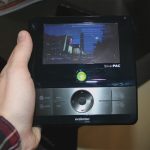Android gets a Web-based app store and manager with Dazzboard 2.0

I recently wrote about Dazzboard in considering what it would take for the iPod to be fully replaced by a non-iPhone smartphone. The Web-based media manager filled the gap between the desktop and the portable device where iTunes has been such an invaluable bridge.
It allows the user to plug in his mobile device to pretty much any Windows computer with Internet Explorer or Firefox and transport photos, music, and videos simply by accessing a Web-based interface. I have personally grown quite fond of it because it offers support for a significant amount of smartphones, including Android and WebOS devices.
CES 2010: Hands-on with Qualcomm's Mirasol full-color e-reader screen

What is so fascinating about the display technology being developed for e-readers is that it gives us a long-range peek into the possible, and even likely, functionality of PCs several years down the road. Today, Amazon's Kindle series, Sony's Reader series, and Barnes & Noble's two readers all utilize electrophoretic "E-paper" displays, and we've found plenty of other screen technologies being employed in e-readers on the show floor at CES 2010. Some companies, like Jetbook makers Ectaco, favor technologies like passive TFT in their screens because they consume less power but supply color and support higher-frame rate animations.
But this week, Qualcomm said it's ready to begin selling screens using its own unique technology called interferometric modulation (IMOD), which Qualcomm's marketing director Cheryl Goodman told Betanews today is a reflective technique comparable to the prismatic effect created when a diamond is held up to a light.
Prediction for 2010-2011: The market for broadband-connected point-and-shoot cameras will grow
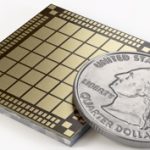
Last year at CES, I spoke to someone who very accurately predicted that we'd be seeing lots more e-readers and 3G connected netbooks at this year's CES.
At the time, I dismissed it because his company wasn't really unveiling anything, and I was too hung up on covering all the breaking announcements. Later in 2009, I spoke to him again, and he reminded me about the e-reader market blowing up. When we spoke then, the Kindle 2 had launched, and there were probably three or four big names promising new products, but that was it.
CES 2010: Hands-on with the Atom-based Windows 7 Pegatron slate
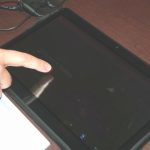
During his CES 2010 keynote Wednesday, Microsoft CEO Steve Ballmer spent a little bit of time showing off the slate (or tablet, if you prefer) form factor, and Windows 7's integration with it. In addition to the top secret HP tablet which Microsoft told me was flown in just hours before the event and flown right back out again, Ballmer mentioned other slates with large screens.
One of them is the forthcoming Pegatron Slate, which I had the fortune of spending a good deal of time with this afternoon.
XStreamHD begins pre-orders for its satellite HD system
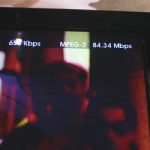
We've been waiting for XStreamHD for over two years. 1080p high definition video with full 7.1 Dolby surround didn't sound possible over a satellite connection when we first spoke to the company, and after being in development for eight years, numerous delays and a false start at last year's CES, we lost hope in the company's ability to actually deliver on its promises.
But yesterday, XStreamHD began taking pre-orders for its Fixed Satellite System (FSS) hardware, and promises that it will land in homes on April 30, 2010.
Microsoft at CES: Finally, what to expect from Windows Mobile 7 and Windows Phone
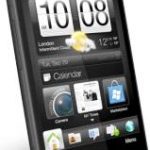
Windows Mobile 7 is more than a year behind schedule, and Windows Mobile 6.5 has been dismissed by practically everyone in the media as a poor stopgap in Windows Mobile's hastened transition from an enterprise smartphone platform, to a smartphone platform for everyone.
But now that it is only two months away from its grand unveiling, Microsoft really isn't talking about Windows Mobile 7 specifically. However, Microsoft gave Betanews today a number of clues about what to expect toward its release, which show us what we can expect in the new, more consumer-oriented (and more than a bit tardy) mobile operating system.
Yahoo: After years of struggling, IPTV is becoming a reality

For five years, Yahoo has been eying the TV screen as a potential platform. Now, after securing partnerships with all of the top TV makers and IP-based content providers, Yahoo has made its Widget Developer Kit publicly available.
The app store gold rush can now be extended to the TV, and fully IP-based television doesn't look that far away.
CES 2010: The 'chicken or egg' question of mobile user interfaces

With the growing popularity of Android, we're seeing a rapid increase in the emphasis that major mobile device makers put on their own branded user interfaces. Two years ago, Samsung showed the big effect a really polished UI can have with the introduction of its TouchWiz UI on Windows Mobile 6.1. Last year, companies such as LG, HTC, Sony Ericsson, and Samsung all unveiled new UIs that appeared on dozens of new devices.
Now, in the first weeks of calendar 2010, LG's S-Class UI can be found on most of its major smartphones. LG's S-Class UI appears on a majority of its smartphones, HTC is developing its Sense atop three mobile platforms, Sony Ericsson continues to make waves with "Rachael," and Motorola has introduced its second MotoBLUR device in what is expected to be a long line of them.
Among the fuss about hyperconnected TVs, a look at the hyperconnected remote
Hands-on with Palm's new Pre Plus and Pixi Plus
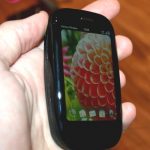
Verizon Wireless has a ton of pull in terms of a mobile device's presence in the US market. After all, look what it has done for Android. It wasn't until the Droid was revealed that a real explosion for Google's mobile OS took place.
Palm today announced its signature WebOS devices, as the Pre and the Pixi have been upgraded and dropped onto Verizon's network. The Pre Plus and Pixi Plus feature twice as much storage as their predecessors, Wi-Fi, out of the box support for Touchstone inductive charging, and of course, EV-DO rev. A 3G on Verizon's network.
Hands-on with HTC's 'featurephone killer,' the Smart
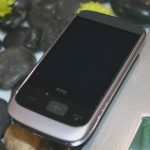
Consumers have displayed a preference for versatile smartphone platforms, and their growth in the last two years has been significant. Some experts subscribe to the belief that the mobile device market will eventually be made up of two things: Smartphones and Pay-as-you-go Voice/SMS burners.
Featurephones, in short, are going extinct.
Sprint dishes up portable 3G/4G hotspot in 10 U.S. markets
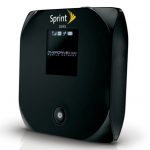
In mid-2009, Novatel launched its MiFi portable 3G hotspot on both Verizon and Sprint, but last night Sprint upped the ante with a dual-mode 3G/WiMAX portable hotspot from Sierra Wireless called the Overdrive.
The pocketable hotspot will cost $100 with a two-year, $60 per month Sprint contract. It is similar to the Novatel MiFi in function, but features a monochrome LCD operating panel, a micro-USB port, and a microSD slot which looks to be a promising bonus, as the device can act as a modem, router, and baby fileserver.
Hands-on with Motorola's strange new Android phone, the Backflip
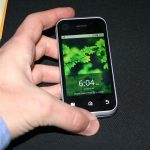
Motorola is fully committed to the Android platform, so that means with an increased number of devices on the platform, there are bound to be some experimental and outlandish ones coming from Motorola in the near future.
One of those is going to be called the Motorola Backflip, which on first glance resembles the Cliq in overall size, shape, and UI. But the similarities end there. Without a doubt the most unusual Android handset to date: the Backflip is hinged like an inside-out clamshell, features a full QWERTY keyboard on the outside of the chassis, and has a touchscreen which features a trackpad on its back side.
CES 2010: Samsung invests more in 3D technology, partners with DreamWorks
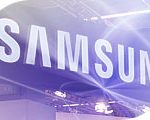
Could Samsung be the next manufacturer with a Droid-quality smartphone on Android 2.1? And what are Samsung's plans to include Internet connectivity -- including a possible PC -- in its newest line of HDTVs? Betanews' Tim Conneally is on the scene with Samsung's press conference at CES 2010.
2:59pm PT: That concludes Samsung's presentation...and now it's off to Panasonic for us.
Hands-on with Toshiba's Cell TV that can convert 2D to 3D

Toshiba's new Cell processor-powered LEDTVs look to be fierce machines. They take the current trends in connected set-top boxes and home theater appliances and roll them up into a single package that is as much computer as it is TV. Packed with 8 core Cell processors capable of 3.2GHz each, Toshiba says its new TVs will be ten times more powerful than your average desktop computer.
It's also equipped with Wireless HD, 802.11n wireless networking, DLNA digital media server capability, a 1GB internal HDD, internal BD drive, USB playback for handheld and mass-storage devices, a built-in camera, mic, and videophone software, and integration with Web-based video services such as Vudu, Netflix, and Cinemanow.
Tim's Bio
Tim Conneally was born into dumpster tech. His father was an ARPANET research pioneer and equipped his kids with discarded tech gear, second-hand musical instruments, and government issue foreign language instruction tapes. After years of building Frankenstein computers from rubbish and playing raucous music in clubs across the country (and briefly on MTV) Tim grew into an adult with deep, twisted roots and an eye on the future. He most passionately covers mobile technology, user interfaces and applications, the science and policy of the wireless world, and watching different technologies shrink and converge.
© 1998-2025 BetaNews, Inc. All Rights Reserved. About Us - Privacy Policy - Cookie Policy - Sitemap.

